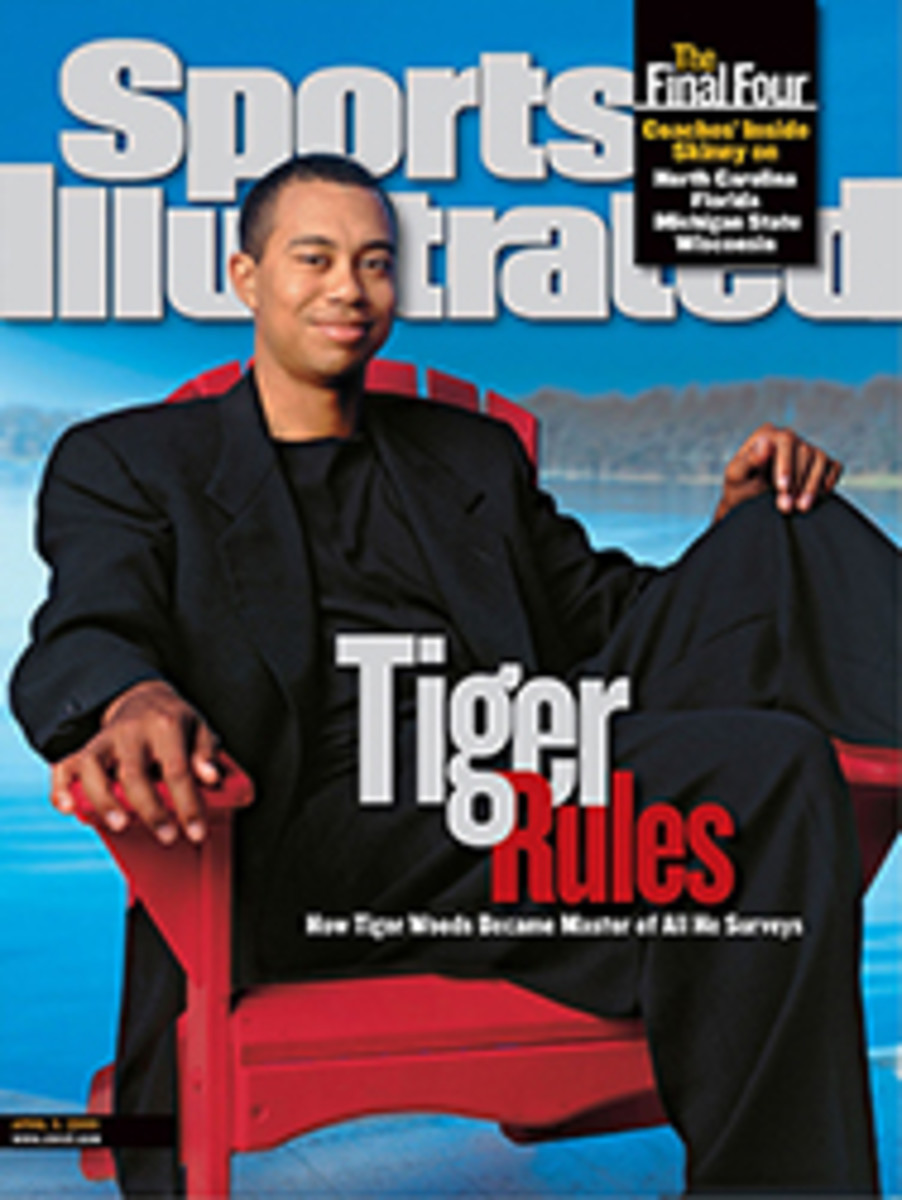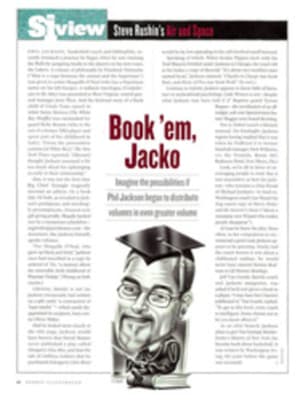
First the Double, Then the Trouble CCNY won the NIT and NCAA crowns in 1950, a year before falling to scandal
It's a blustery March afternoon in central Harlem, just a few
minutes walk from the campus of the City College of New York,
and Ed Warner is sitting in a wheelchair in his tiny apartment
watching the NCAA basketball tournament. "Sometimes I'll be
watching a game on TV, like today, and I'll have a little
flashback," says Warner, a star forward on the 1949-50 CCNY
basketball team. "I'll think back to the way we played and how
good we really were."
Not long ago Warner would not have admitted--at least
publicly--to any fond memory of his CCNY playing days. He didn't
want to talk about how his '49-50 Beavers shocked the sports
world by becoming the only team to win both the NIT and NCAA
championships in the same year. He didn't want to discuss how
they struck a blow for civil rights by beating Adolph Rupp's
vaunted all-white Kentucky team or how they stole New York
City's heart with their poised, unselfish play and diverse
roster of homegrown talent. "Nobody in the media ever wanted to
talk about the positives," says Warner, who suffered spinal cord
damage in an '84 automobile accident and still has difficulty
walking. "All they cared about was the scandal."
In early '51, with CCNY's grand season still fresh in the city's
memory, seven Beavers--Herb Cohen, Irwin Dambrot, Floyd Layne,
Norman Mager, Ed Roman, Al Roth and Warner--were arrested and
charged with conspiring to fix games. The CCNY players were
hardly alone. Some 30 players from six schools around the
country, including powerhouses Kentucky and Bradley, would also
be snared in the web. In some ways, however, the guys from CCNY
were hit the hardest. The scandal ended their NBA hopes, prompted
the suspension of the CCNY program and forever tarnished the
'49-50 team's legacy.
Fifty years later the crime for Warner and his former teammates,
each of whom went on to a productive career, might be that so few
fans remember how special they were. Coach Nat Holman's Beavers
not only made history in sweeping the NIT and NCAA crowns but
also lit up New York City as no college team before them had. In
those days the city featured some of the top programs in college
basketball, including CCNY, Fordham, Long Island University,
Manhattan, NYU, and St. John's, and crowds of 18,000 packed
Madison Square Garden for doubleheaders. CCNY, with a starting
five that comprised two black and three Jewish players, all of
them hometown boys, rivaled the New York Yankees and the Brooklyn
Dodgers in local popularity. Students at CCNY, dubbed the poor
man's Harvard because of its lofty academic standards, lived and
died with every game, raising arena roofs with their unique
school cheer:
Allagaroo garoo gara,
Allagaroo garoo gara,
Ee-yah ee-yah,
Sis boom bah,
Team! Team! Team!
In the years leading up to the '49-50 season CCNY had fielded
competitive teams but none that could challenge for the national
title. After the '47-48 season, however, Holman's assistant,
Harold (Bobby) Sand, helped boost the program to the next level
by recruiting five of the city's top high school players--Cohen,
Layne, Roman, Roth and Warner. After the scandal broke, it was
alleged that some of the players had "backdoored" the admissions
process with forged entrance papers, while others had been
offered summer jobs and other inducements to attend CCNY. (The
players disputed this.) The college, wishing to stay competitive
in what was becoming an increasingly important arena, apparently
looked the other way.
By the time the '49-50 season rolled around, CCNY's sophomore
class had joined with holdovers Dambrot and Mager to form the
nucleus of a championship team. The starting five featured the
6'2" Roth and the 6'4" Layne at guard, the 6'3 1/2" Warner and
the 6'4" Dambrot at forward, with the 6'6" Roman at center.
Mager, a 6'4" outside shooter, was the sixth man, and the 5'11"
Cohen also provided support off the bench.
On offense the Beavers played intelligently and unselfishly,
moving the ball to the open man and hitting cutters for wide-open
layups. On defense they employed a switching man-to-man defense
that often left opponents tied in knots. It was New York City
basketball, and the Garden crowds loved it.
"It was sort of like the way Princeton plays today," recalls
Dambrot, a retired dentist living in New Jersey. "Constant ball
movement, screens, backdoors, pick-and-rolls. We got a lot of
easy shots." The Beavers ran clinics against most of the teams
they played.
Unfortunately, gambling was common at the time, and the invention
of the point spread in the late '40s had made college basketball
players easy targets for local wise guys. According to some
accounts, including Scandals of '51, a book published in 1978 by
Charles Rosen, unbeknownst to their coach, Cohen, Dambrot, Mager,
Roman and Roth were in cahoots with gamblers during the season
and some or all of them agreed to shave points in three games,
including one they lost. CCNY put together a 17-5 record, earning
the last spot in the 12-team NIT field. The gamblers approached
some of the CCNY players about rigging the postseason, but the
Beavers refused.
In March the Beavers opened the NIT by shocking top seed and
defending tournament champion San Francisco 65-46. The upset set
up a second-round showdown with defending NCAA champion Kentucky.
Respectful of Kentucky's talent and well aware of Rupp's racism,
the Beavers prepared as if on a mission. When several Wildcats
refused to shake hands with the black and Jewish CCNY players
before the game, the Beavers bristled with anger.
Hoping to capitalize on his team's fire, Holman sent out one of
his black players, Leroy Watkins, a 6'7" reserve center, for the
opening tip against the Wildcats' 7-foot future All-America
center, Bill Spivey. Watkins beat Spivey to the ball, and the
rout was on. As the Garden crowd went wild, CCNY streaked past
the Wildcats 89-50, handing them the worst defeat ever suffered
by a Rupp-coached team. "We were sky-high for Kentucky," says
Layne, now a high school basketball coach in Brooklyn. "We were
above the rim all night." They were still in the clouds the next
day. While Holman took his entire team to see South Pacific on
Broadway, the Kentucky state legislature called for the flag over
the capitol to be flown at half-staff.
With the shouts of "Allagaroo!" ringing in their ears, the
Beavers beat Duquesne 62-52 in the semifinals to earn a date with
Bradley in the title game. The Braves were 29-3, ranked No. 1 and
featured All-America forward Paul Unruh and future All-America
guard Gene Melchiorre. Like Kentucky, however, Bradley could not
keep up with the run-and-gun Beavers, and CCNY prevailed 69-61.
The Beavers were carried off the floor on the shoulders of their
delirious fans.
The CCNY players didn't have much time to celebrate their
achievement. Just a few days after taking home the NIT trophy,
they were invited to play in the NCAA tournament, which was
scheduled to begin a few days later at the Garden. Though the NIT
was considered the more prestigious tournament, no team had ever
won both titles in the same year, so the CCNY players set out to
make history.
The Beavers hung on for a 56-55 victory over Ohio State in the
East region opener and followed it two nights later with a 78-73
triumph over North Carolina State. That set up a title-game
rematch with Bradley, which had beaten Kansas, UCLA and Baylor in
the West Regional. Hungry for revenge, the Braves played the
Beavers tough but still trailed 39-32 at halftime. Just before
the buzzer Mager was sent sprawling to the court after a
collision with a Bradley player. In the locker room at halftime a
team doctor put six stitches in Mager's head--having him bite down
on a piece of balsa wood for the pain--before sending him back out
onto the court.
Bradley trailed by just a point, 69-68, with seconds to play when
Melchiorre swiped a CCNY pass and raced downcourt for the
potential go-ahead basket. To the Allagarooters' delight, Dambrot
intercepted the Bradley star under the basket and, after a
collision--and noncall--came up with the basketball. With a perfect
pass Dambrot found Mager standing alone downcourt, and Mager
converted the open layup to seal the 71-68 victory.
CCNY's double triumph made headlines across the country. The New
York Times called it "a vindication of the democratic process."
Holman appeared on The Ed Sullivan Show. On CCNY's campus bedlam
reigned. The day after the victory 2,000 students from CCNY's
business school downtown paraded up Fifth Avenue, stopping
traffic in Times Square, and boarded subways for the uptown
campus, where they joined another 4,500 students on the main
quadrangle for a spontaneous celebration. "The whole school
turned out," Roth says. "You couldn't walk through the crowds. We
were the toasts of the town."
Less than a year later they were simply toast. An investigation
by the district attorney uncovered the point-shaving ring, and
the CCNY players were rounded up. Warner, who was convicted of
shaving points in three games during the '50-51 season, served
six months in jail. CCNY canceled the rest of the season and
began deemphasizing basketball. Just like that, the Beavers had
gone from heaven to hell.
Today the surviving CCNY players are old men with children,
grandchildren and lives far removed from the scandal. Warner
spent more than 40 years working with kids as a counselor for the
New York City Board of Education. Roth and Mager became
successful businessmen. Roman was a psychologist working with
troubled high school youth in Brooklyn before he died of leukemia
in 1987. To a man the surviving players vividly recall their
glorious run through the '49-50 season.
"It was a unique accomplishment," says Warner as he sits in his
apartment and watches March Madness on his TV screen. "No matter
what people say, they can't take that away from us."
B/W PHOTO: AP Bradley could not keep up with Dambrot (with ball) and the run-and-gun Beavers in either final.
B/W PHOTO: AP The NIT and NCAA sweep made Coach Holman and the Beavers the toast of New York City.

